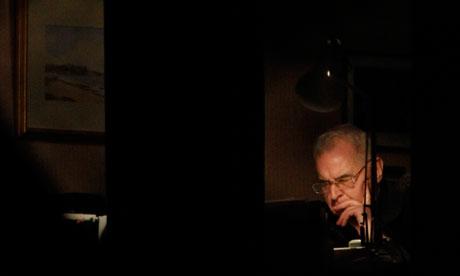Cardinal O'Brien Has Exposed Vatican Dishonesty on Celibacy
By Andrew Brown
The fall of Keith O'Brien is more than just the humiliation of a proud and lonely man – a humiliation certain to be prolonged by the apparent dishonesty of his partial confession. It is also a further suggestion that the discipline of celibacy can't much longer be maintained for the vast majority of the Catholic priesthood. I don't want to suggest that celibacy is impossible or pointless. Clearly it need be neither. I have known some very good, honest, loving and trustworthy people who have taken vows of celibacy and so far as I know they have kept them. I have also known a brilliant alcoholic whose life never really recovered from leaving the Jesuits to marry. The only major religion that places no value on celibacy at all is Judaism – and there are plenty of sex scandals involving rabbis, too. Marriage on its own solves no more problems than celibacy does. But the Roman Catholic church is the only major denomination that tries to enforce celibacy on all its clergy almost without exception. There are a number of Eastern Catholic churches that contain married parish clergy but celibate bishops drawn from their monastic orders. In the UK, America and Australia, there are a few married former Anglican clergy. No successors are planned for them. The ban has been in place since the 12th century, and more or less enforced since the counter-reformation of the mid-16th century. Celibacy seems to be widely ignored in the places where the church is growing today – in Africa, in Latin America and perhaps in Asia too – and widely discredited in the developed world, where the church is shrinking. In part this is because of a growing mismatch between the expectations of the church and the expectations of the societies around it. Jeremy Seabrook's piece on Comment is free is subtle and thoughtful exploration of this change. The problem is neither with the doctrine itself, nor with the morals of the surviving world, but in their interplay, which tends to force a kind of fundamentalism on the church – using the definition of Peter Herriot, a retired psychologist at City University. He told a seminar at the British Academy last week that fundamentalists "have a dominant social identity as believers … central to their self-concept, whereas personal identity is peripheral … ensuring that conformity, maintaining strict boundaries and stereotyping outsiders … meet their needs for meaning, self-esteem and affiliation in a threatening world. Fundamentalist leaders use narratives based on powerful traditional symbols and myths which define and reinforce this unique social identity." The important point here is that these "fundamentalist" traits are not just a characteristic of the doctrine, and do not depend on literal belief in a book. They arise when traditional practices and beliefs come to seem incredible and absurd to the society in which even fundamentalists live. The traditional model of Catholic priesthood in the west – where men lived together in large groups, admired by their parishioners but existentially remote from them, and in any case brought up in a seminary throughout their adolescence – provided an interior world where celibacy seemed normal and attainable. That model collapsed in the latter half of the 20th century. More than 100,000 men left the priesthood to marry before Pope John Paul II made it almost impossible; the average age of priests in the US rose from 34 to 64. There are no official statistics – obviously – on the extent to which this gap has been filled by gay men, nor on how many of those are celibate. But informed Catholic observers agree that the number is high, and that there is a profoundly unhealthy culture of pretence within the priesthood. When the HIV/Aids epidemic first hit the US in the 1980s, the death rate among the Catholic priesthood was three times the national average. All these facts have been known for years to anyone who cares to think about the problem. It is the great misfortune of the Catholic church that it contains powerful men who are determined not to think about the problem, and who seem to believe, in fact, that their own sanity depends on refusing to admit reality. That cannot end well. In the case of O'Brien, it has already ended badly. What's needed is a fresh start, in honesty and humility. And – since everything else has been tried and failed – that may even be the policy of the next pope, whoever he turns out to be.
|
.
Any original material on these pages is copyright © BishopAccountability.org 2004. Reproduce freely with attribution.
